Mr. JJ of The Invisible Event (you do know that JJ is his last name, not his initials, right? His first name is Al) recently posted on my favorite topic, Agatha Christie, detailing some of the highs and lows he had experienced after nearly twenty years of reading the Queen of Crime. It was a charming post, not a dry best of/worst of list of titles but an idiosyncratic compilation of ideas and people, and whiskers on kittens and many of Mr. J’s favorite things. We know from an even earlier post that JJ’s memory is rather sketchy, so we can forgive him his vaguely negative memory of great titles like Towards Zero and focus on all the cool ups and downs of his reading experience. Plus, you learn a lot of deep, personal stuff about someone who shares his tastes – stuff he may not have even intended to let you know. For example, JJ lists the five Christie titles that he believes “Get Overlooked when People Pick (Their) Top Five Christie Books.” Interestingly, if you stack these choices, the first letters of each title spell Al’s middle name.
- S even Dials Mystery
- A ppointment with Death
- S ad Cypress
- H ickory Dickory Dock
- a nd The Mirror Crack’d From Side to Side
I warned JJ that this was too good for me to resist plagiarizing honoring with my own post of things in Christie – certain moments, characters, and miscellanea – that give me goosebumps of pleasure. Now, JJ has only been reading Christie for a score of years, and I have been reading her for fifty! (Curiously, JJ and I both 37 years old!!) JJ likes and admires Christie, but in his heart she’s no John Dickson Le Carre, whereas Christie stands at the apex of my GAD admiration. I’ve read all but three of her novels more than once (I think you can figure out which three they are; however, you will find no mention of them here), and I have read most of the canon multiple times. Herewith, then, a similarly idiosyncratic compilation of stuff I love and maybe a little bit of stuff I don’t love so much about this lady:
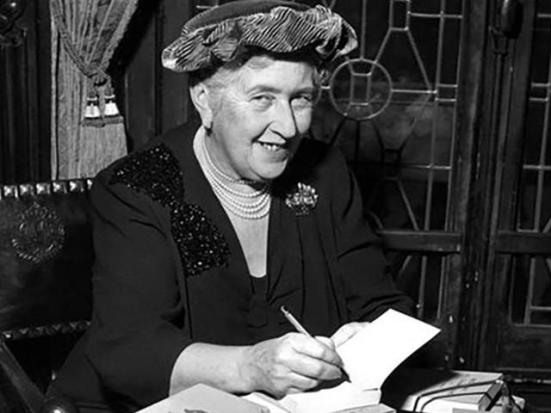
THE LOOK 
This is one of my favorite Christie plot devices, one she shares with the world’s best director, Alfred Hitchcock. It’s a special moment where a character gazes over somebody’s shoulder and sees . . . well, that is the question! Christie’s utilization of this technique illustrates her ability to spin multiple variations on the same device. The Look unmasks fear, or guilt, or knowledge, or surprise . . . or a combination of two or more of these. Invariably, since these are mysteries, the person experiencing The Look winds up dead – but even the reasons for this fate are handled with marvelous diversity.
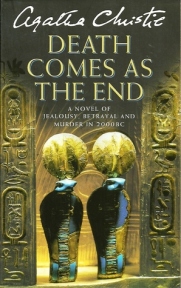
For me, The Look can lift a so-so mystery into the stratosphere, at least for a moment, as it does in Death Comes as the End. Although set in ancient Egypt and awash with period detail, Death is a British country house mystery through and through as a family is decimated, seemingly by the vengeful spirit of the hated concubine who died first. With a body count second only to And Then There Were None, much of this novel is great fun, no more so than when the shrewish Satipy, walking along a cliff, looks behind her and sees – the beautiful but evil spirit of Nofret!? Thus, Christie adds an element of the supernatural to a tale that is already nearly devoid of real detection. And yet she is handing you a valuable clue here, if – unlike Satipy – you are only willing to see it.
The Look is employed often, but besides the example above the three that give me goosebumps are:
Murder Is Easy (1939): Actually, the entire novel is built around The Look! As poor Lavinia Pinkerton explains to Luke Fitzwilliam on a train to London, people keep dying in Wychwood under Ashe, and it was just her luck to notice “the look on a certain person’s face” before each murder. When we finally see that look on the actual killer’s visage – goosebumps!
The Mirror Crack’d from Side to Side (1962): The most emotionally heartfelt use of The Look, one can only wish in hindsight that Marina Gregg had shouted to the rooftops what it was she saw over Heather Badcock’s shoulder. It might have spoiled the mystery, but then I think Marina would have survived, and three murders might have been averted. A powerful and controversial novel this!
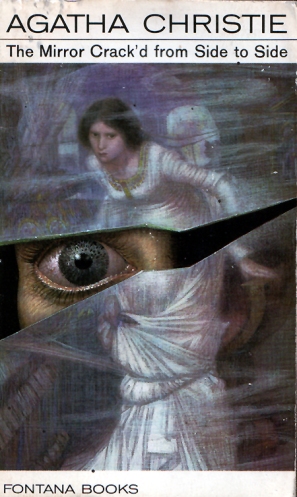

A Caribbean Mystery (1964): This was my first Miss Marple novel and contains my favorite use of The Look. Poor Aunt Jane is trapped on a Caribbean patio with the tedious Major Palgrave, and she doesn’t know what is worse: his steady stream of boring tales or the hideous sight of his bulging glass eye. I loved the set-up when I first read this, but it’s only upon a revisit, now that I know what it was the Major saw over Miss Marple’s shoulder – and how cleverly Mrs. Christie hands you the solution immediately and dares you to comprehend what you’re looking at – that I get small shivers of pleasure upon rereading this opening scene.

THAT’S ALL, FOLKS! THOSE PECULIAR MISS MARPLE ENDINGS
Endings to Miss Marple mysteries are a decidedly mixed bag. This may be because the old lady tends to reach her solutions more by instinct than by a logical association of clues. As a result, she often has to resort to trickery of the silliest kind in order to nail a killer. Admittedly, sometimes this final scene is so well done that it saves the day, or at least delays our realization that if the culprit had only refrained from confessing, he or she would be free today!
Ironically, my least favorite finales occur at the end of my two favorite Miss Marple mysteries! Like JJ (and many others, I imagine), I can’t understand why Christie introduced her spinster sleuth so near the end of The Moving Finger (1943) when Jerry and Joanna Burton were speeding along at full steam so well. Deus ex Marple preempts their triumph and reduces brother and sister to little more than romantic pawns. It’s a damn shame!

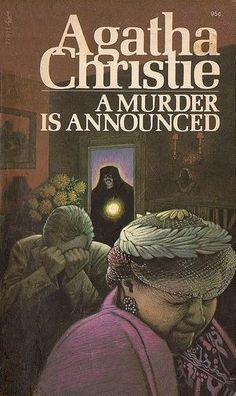
The Marple title that will always fit into my personal Christie Top Ten is A Murder Is Announced (1950), which actually contains the most effective use of clueing of any of the old lady’s cases. So why ruin it with an utterly ridiculous ruse to capture the killer? Since when was Miss Marple an expert at mimicry? And why would a killer who has been utterly ruthless from start to finish suddenly break down and confess out of sentimentality? It’s a weak ending to an otherwise brilliant story.
Meanwhile, two otherwise charming novels do away almost completely with straight detection, and the greatest mystery of all is how Miss Marple could have identified the killer . In both A Pocketful of Rye (1953) and 4:50 from Paddington (1957), Yet both cases are redeemed by their powerful endings, one light and one dark. In Paddington, Miss Marple stages the most delightful trap to capture the killer! It really is a marvelous scene, again highlighting her heretofore unrecognized acting skills to such a degree that the culprit is too shocked to shut up and ride out the accusation. And while we never get such a moment at the end of Rye – Miss Marple doesn’t even confront the culprit – the coda at the end that ultimately supplies the proof of a killer’s guilt is so emotionally affecting that one can’t help but shed a tear along with the usually composed sleuth. This one is a clear foreshadowing of Miss Marple’s eventual assumption of the mantle of Nemesis.

THE DAGGER OF THE MIND
If there’s one thing Christie teaches her fans, it’s that anybody can turn out to be the killer in the end. That this included the narrator on more than one occasion – coupled with the fact that Christie did not touch the inverted mystery form – meant that her fans were treated not only to some fascinating twists but ultimately to some pretty kinky mindsets. But let’s leave this most famous of twists behind for a moment, and we find that on several occasions Christie took us into the head of a killer. Some of these moments happen at the end, so they are part of the twist. But on at least three occasions that I can recall, they happen well before the end and are quite thrilling.
One of these is probably a cheat, and I hesitate to reveal it for fear of spoiling one of my very favorite Christie titles. I’ll just say that in all fairness when you read this short scene you are not aware that you are looking into the mind of a killer; in retrospect, however, this person’s thoughts are a dead giveaway of both the character and one of Christie’s greatest motives.
The early moment in Towards Zero when the author takes us into the mind of the killer planning the murder is chillingly effective, both in what it reveals and what it hides. We discover that we are dealing with a maniac: the thread of insanity winds throughout this novel, and given the extreme “normalcy” of this cast of characters, it makes for a delicious reveal at the end. But what Christie does not tell us involves an aspect of the plan that is hidden till the end, revealing the true depth of this person’s mania – I’ll say no more.

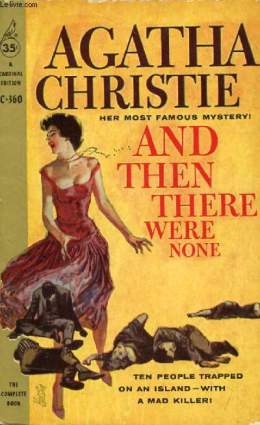
And finally, there is the classic: in And Then There Were None, Christie makes occasional forays into the actual thoughts of the surviving characters, even after it is proven that the killer must be somebody we have met on the island. These scenes reveal the madness within, but they do so in a way that teases us cunningly but gives away nothing about the killer’s identity. In Chapter Thirteen, Christie shows the five remaining guests seated at a midday meal, observing the social niceties as British people tend to do despite the decimation of their fellow partyers! Knowing the solution as I do, I could tell you which fragment of thought belongs to the killer, but Christie is too clever to reveal exactly what’s going on. At the moment of first reading, you could very well discount each of these persons’ inner ravings – and find yourself still mystified as to which of them dun it!

THE ART OF CONVERSATION
Maybe Christie was too fond of disguise. Maybe she tended to drop too many physical clues around the scene – and maybe some of them are problematic. Her locked room problems are no match for Carr and his ilk, and her thrillers were, for the most part, bunk. But one thing Christie could do better than anyone else is hide a clue in a conversation. Here is where all this talk we’ve been having about re-reading an author comes into play because it is in my deep memories and knowledge of certain Christie titles that I find myself treasuring every revisit. It illustrates her tremendous abilities at misdirection, precisely because her utilization of this skill never follows a pattern. I don’t want to spoil anyone’s experience of this, but I want to mention in the most general of terms, three examples that fill me with great, goose-bumpy joy. If you’re extra sensitive, skip the next three paragraphs.
Almost at the outset of Towards Zero, Christie drops an important fact about the killer and then teases us about this in nearly every scene. Those of us who consider ourselves experts at reading Dame Agatha are trained to be watchful. Even as nearly every suspect seems to fall into the category of this fact, we search and search for the clue that will separate one person from the herd. And yet we’re paying little attention to one of the few lighthearted moments in the novel where everyone seems to be getting along and having a fun conversation that drops something casually into our laps . . . and which I would hazard a guess 99% of her readers either forget or fail to spot the significance. Bingo!

The opposite occurs in After the Funeral, where the characters gather to have a very dramatic (although it also is quite funny) argument and where in the midst of everything, a person says something that puts several clues together to form a solution! Poirot himself has advised that all one needs to do to solve this case is to sit back and listen to people talk. Sure enough, a comment that may or may not strike you when you read it is all Poirot needs to point him in the right direction.
Finally, there’s A Murder Is Announced. Here, Christie is so adept at reading the psychology of her readers that she can play trick after trick right in front of their eyes. One of the first of these is a blatant shout-out to the killer, but the timing of its presentation is brilliant. First, it may just be a typo. Or it could be explained away by the nature of the character who says it. Or, most likely, readers will be scanning too quickly to even notice it. Christie almost buries the clue in a massive info dump of exposition. It also helps that certain information has not been revealed yet, and once it has been, who’s going to go back and check this early page on a whim? Sheer brilliance!

“NO ONE’S GONNA SAVE YOU FROM THE BEAST ABOUT TO STRIKE . . . “
When you start out reading Christie as a child, your first read is the best one. I had no points of reference or advanced knowledge of GAD tropes to compare the lady to. As I’ve gotten older and grumpier, er, smarter, I have come to realize how little I think of her thrillers. Recently, I tried to re-read The Secret Adversary and simply could not get through it. This might say as much about the effects of iPhone addiction on my powers of concentration, but let’s face it – Christie’s thrillers are weak.
With that out of the way, here’s a list of moments from the thrillers that I absolutely adore. Warnings and apologies if any of this seems spoiler-ish!

- The first chapter of The Secret Adversary (1922): definitely a Reaction in Hindsight, I love Tommy and Tuppence far more than all of their adventures combined. Witnessing their first encounter with all that sparkling banter is a wonderful introduction to a couple who spanned Christie’s entire career, despite appearing in only five books.
- I love the first sentence of The Seven Dials Mystery (1929) because it sets up the delightful reversal at the end and plays us all for fools.
- The biggest problem for me with They Came to Baghdad (1952) is that I find Victoria Jones to be irritating in the extreme, and although she is brave, she is also stupid. But when the Big Surprise arrives toward the end, it always makes me jump with pleasure. This is Christie’s best example of the allure fascism had for young people. (I also think that she introduces the novel’s best character way too late in this novel. Is it just coincidence that he happens to resemble her husband?)
- It’s plot is utter ridiculousness, and it contains a truly enjoyable surprise twist at the end, but Destination Unknown (1954) becomes less and less fun to re-read. However, I get such a kick from the fact that X, the mysterious mastermind behind the defections and disappearance of the world’s leading scientists, has had the presence of mind to install a shopping mall in his underground lair. Here, women on a break from inventing new types of nuclear warfare can get their hair done or consult with a noted French couturier on the latest fashions so that they can look smart at all the dinner parties they’re going to have when X comes for a visit. Because X likes his female scientists to look smart!
- I don’t consider The Pale Horse a thriller, but if you consider it to be a thriller, let me just say here that I love The Pale Horse. One of these days I’ll devote a post to it and tell you why.

MISCELLANIA
Listen, if Christie didn’t still give me goosebumps after all these years, I would have moved on long ago. Any GAD blogger worth his or her salt will tell you that we mean to reread this or that book so that we can discuss it with authority or share in one another’s particular favorites. I’m lucky that, as much as I love John Dickson Carr, I have forgotten so much about my earlier reads that I can return to many of them as if it were the first time. Christie, however, remains fresh in my mind because I just can’t let her go! I find something new to love about every title each time I return to it.
Therefore, listing everything here about Christie that gives me goosebumps would be, to say the least, impractical. But here are five miscellaneous thoughts that should give you a good idea of my tastes.
- Why were Captain Trevelyan, the Reverend Stephen Babbington, and Cora Lansquenet killed? The answers to that question delight me.
- Why was a character as delightful as Katherine Grey trapped in a novel as mediocre as The Mystery of the Blue Train? At least she was given Lady Tamplin and Lenox for company, and whenever the three of them show up in that dreary tale, the sun shines on the Riviera.
- I think Christie does mothers better than any other family member. (She was very fond of her own mother, and I think that, by and large, she enjoyed being one herself.) They can be madonnas or monsters, but mothers in Christie are always memorable. I mentioned Lady Tamplin above (a delightful monster). Here are a few more whom I adore: Mrs. Allerton and Salome Otterbourne, who run the gamut of motherhood in Death on the Nile, the toad-like Mrs. Boynton in Appointment with Death, Adela Marchmont, fluffy and helpless, in Taken at the Flood, Magda West, the original Mommie Dearest, in Crooked House, and Mrs. Upjohn, she of hidden depths, in Cat Among the Pigeons.
- Ariadne Oliver proved that Christie could write sophisticated comedy and make fun of herself. She also saved at least two books at the end of the author’s career.
- I think the story of the baby in the fireplace (“Was it your poor child?”) is as creepy as anything Shirley Jackson ever created. It was so good that Christie used it twice. (Alas, if only By the Pricking of My Thumbs could have lived up to its promise.)
Finally, let’s get an update on . . .
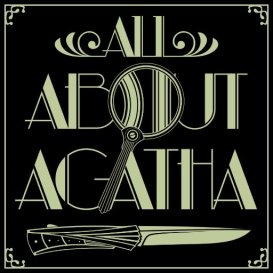
I’m playing catch-up with my favorite podcast (because I just discovered it on New Year’s Day!) I have focused on their take on the novels, which means I look forward to listening to their take on the short stories found in The Thirteen Problems and Partners in Crime. When I was just starting out as a blogger, I devoted multiple posts to The Thirteen Problems, as it is my favorite collection. (If you are interested in my take, start here.)
I have hit the one year mark of Kemper and Catherine’s podcast, and on their anniversary they talked about their rankings and made some adjustments. I took away some interesting thoughts from their discussion:
- Like me, they find the thrillers . . . problematical and can be dementedly funny about them. But they also can find things to love everywhere: Tommy and Tuppence save The Secret Adversary, Anne Beddingfield is charming enough to warrant a search for The Man in the Brown Suit, while Chimneys is a country manor for the non-Christie fan to definitely avoid!
- They made some fascinating comments about the power of re-reading. I think I’ve gone into my take about it here, but, like them, I will vouch that returning to a beloved author as an adult after reading her during one’s childhood can be a profound and surprising experience. After only a year of reflection, the podcasters have found their opinions evolving. Imagine what will happen, you guys, after you’ve lived with Christie for another twenty or thirty years!
- They sometimes disagree with each other (I can’t wait to hear their dialogue over Five Little Pigs!) and their opinions sometimes differ from mine, but we are on board about certain things, like how wrong are the critics who have dismissed Mrs. Christie as a writer and social critic, or how sadly wrong the writers of Agatha Christie’s Marple got things in their adaptations.
I’m a little confused about their adjusted scores, so I hope I’ve got this right. After listening up to Why Didn’t They Ask Evans?, the top five Christies in their opinion are:
- The Murder of Roger Ackroyd (1926) – 37 points out of 50
- Murder on the Orient Express (1934) – 35
- Peril at End House (1931) – also 35 points, but they have agreed to give MotOE the edge
- The Murder at the Vicarage (1930) – 34
- Lord Edgware Dies (1933) – 33
I do think The Sittaford Mystery (1931) deserves to be ranked above Edgeware, yet part of the fun is seeing where our opinions jibe and where they differ. Heck, I change my own mind about one title or another every week!
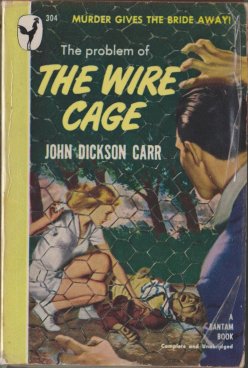
FINALLY . . . A REMINDER: Tomorrow, my good buddies Ben from The Green Capsule and Mr. Alvin Sasha Jhayjhay from The Invisible Event will be holding forth on John Dickson Carr’s The Problem of the Wire Cage, including the solution (spoilers will abound!) Everyone is welcome to participate in the discussion; I myself read this one in preparation for the big event. Hope to see you there!
What a fine post, Brad – thank you. One of the things that struck me as I read your post was how often (and how effectively) Christie made use of very simple devices (e.g. a look, a comment, an unconscious action). Not that she never used drama in her stories, of course, but it’s often those subtle things you have to look for, if I can put it that way.
LikeLiked by 2 people
Perfectly put, Margot! Critics ignorant of her skill label her “ordinary,” but part of her genius is hiding clues in the casual details of life.
LikeLiked by 2 people
About all about Agatha: After they adjusted the ratings, they put a document with the standings at that time online. You can download it here: http://ow.ly/d/6Oaz It includes everything up to Why didn’t they ask Evans.
LikeLiked by 1 person
Thanks, hg! I did see the list, but I didn’t notice the revised one. Now my readers can check it out here!
LikeLike
So glad you mentioned her – I adore Mrs. Upjohn, she is probably my favorite mother in the Christie canon. I also happen to adore the book she appears in, CAT AMONG THE PIGEONS, one of my all time favorite Christie books – one I never tire of re-reading. I’m not as taken with the top five Christie book listing from Kemper and Catherine. Let’s just say those listed are not MY favorites. But then I love Christie’s thrillers, so obviously, I am not to be taken seriously. Ha. SECRET OF CHIMNEYS is one of my faves simply because I love Virginia Revel (and not only her name) and even more revealing of my quirky tastes, I love Bundle’s pop, the Marguise of Caterham, one of the few men in any book I’d consider marrying should the occasion arise. He makes me laugh out loud every time. I don’t think I need say anymore. 🙂
But mom-wise, I also adore Maureen Summerhayes of the blood in the string beans culinary school.
What a wonderful post, Brad. SO MUCH FUN to read but then we Christie aficionados are, if I dare so myself, a fun lot. I agree with you about the endings you mention. Especially A MURDER IS ANNOUNCED, my favorite Miss Marple. (And adapted beautifully by the BBC in the 80’s for Joan Hickson.) In this particular book Christie tells us who the killer is early on (as you mention) but the sleight of hand is so brilliant.
I also enjoy – though you do not – THEY CAME TO BAGHDAD and DESTINATION UNKNOWN. To me, they’re just pure entertainment, not meant to be taken especially seriously. I am also enamored with THE MAN IN THE BROWN SUIT where, to my mind, Christie uses a MURDER OF ROGER ACKROYD ploy and nobody notices.Unfortunately, THE MAN IN THE BROWN SUIT has NEVER been adapted properly. And for that matter, the adaptation of MURDER OF ROGER ACKROYD was godawful. But then, not an easy book to film.
Thanks for being a devoted Christie fan and thanks for writing about her books lovingly and often. Very enjoyable.
P.S. I also love THE PALE HORSE. Can’t wait to read your take.
LikeLiked by 1 person
Joan Hickson could make one embrace even those silly endings, Yvette . . . and I am thrilled to say that I am long overdue for a rewatch of that series, which I think I will tackle over the summer. As I stated here, I enjoyed the thrillers well enough when I first read them, although what I really latched onto was the traditional mystery element Christie inserted into most of them. Is it just coincidence that nobody has adapted them to film at all well? The Miss Marple version of Chimneys was grotesque! (And it kind of spoiled your marriage plans!!) I agree about Ackroyd as well . . . and about the almost ludicrous aspect of trying to put such a literary feat on film!
LikeLike
“It was so good that Christie used it twice.”
Actually Christie used it thrice !
LikeLiked by 1 person
I vaguely thought so. Pale Horse, Thumbs, and . . . ?
LikeLike
and Sleeping Murder.
In her autobiography, Christie writes about her family home Ashley:
“On the other side of us there was now a mental nursing home. Sometimes queer sounds would come from there, and patients would appear suddenly in the garden. They were not certified, so I presume they were free to do as they liked, but we had had some unpleasant incidents.”
It is possible that the lady with the glass of milk was one of these wanderers and her babbling made an impression on Christie.
LikeLiked by 1 person
An interesting read, although I realized that it was in my best interest to skip through a few parts. This is definitely a post I’ll be returning to.
One correction – JJ’s real full name is JJ McC. Before he became a blogger, he started out by writing intros for early Ellery McQueen novels. Novels that he loved so much, he was willing to stake his reputation on them.
LikeLiked by 1 person
😛 Funniest comment I’ve read here in a long time!!!!! Thank you, Ben!
LikeLike
Dammit, Bradley, that’s the last time I trust you with my secrets…
LikeLike
Oops! Sorry, Al!
LikeLike
Great post. It only makes me look forward even more to my own re-read of Christie. 🙂
(Seeing that you revealed that JJ is our fellow blogger’s last name, I was greatly relieved to find out that his first name wasn’t Vuh.)
LikeLiked by 2 people
See, I saw “goosebumps” and thought this was going to be a post about creepy moments in Christie. Sadly I could only think of one, from Murder is Easy:
“They all die.”
Melodramatic, but it’s a sudden and jarring example of just how petty and calloused the character in question is. But then, I like Murder is Easy, probably more than I should! One of Christie’s underrated surprise murderers, at least from what I’ve read of her so far.
Also, yet another post singing Christie’s praises that doesn’t mention Ordeal by Innocence. I think I’m the only one who likes that book.
LikeLiked by 1 person
No, I like Ordeal by Innocence, but I reread it not too long ago and was struck by how after Arthur Calgary delivers his emotional blow to the Argyles, he sort of disappears from the story for way too long a time, the police take over, and we’re caught up in a more conventional murder in retrospect with interview after interview. The characterization is strong, although we’ve seen nearly every one of these characters in another guise in other books. This one’s gloomy, and I can’t believe I forgot about it when I included a list of “people in jail” plot lines in my discussion of Sad Cypress. ObI doesn’t give me goosebumps.
Murder Is Easy does, though, in both it’s marvelous opening chapter and in the final confrontation with one of Christie’s creepiest killers. I didn’t want to talk about murderers too much this time, for fear of spoilers. But the revelation here gives me goosebumps, as does the one in Towards Zero and the first sentence of the killer’s confession in Crooked House.
Oh, and I just thought of another creepy moment – aren’t you glad you asked? It’s Ginevra Boynton at the dinner table, smiling beatifically as she tears her handkerchief to shreds in her lap.
LikeLike
Pingback: And it’s Been Right There the Whole Time* | Confessions of a Mystery Novelist...
Wonderful. I just discovered your first-rate blog — thanks, Margot — and I’m hooked. Now, I have a problem. what Christie shall I read next? Thanks, Brad.
LikeLike
Thank you, R.T.! How many Christies have you read? What are you in the mood for? I will give you recommendations till the cows come home!! 🙂
LikeLike
Brad, I’ve seen more on TV than I’ve read; I’m quite partial to Poirot rather than Marple (and others) and would welcome your Rx for “the best of Poirot.” In my old age, I confess also to being not much of an analytical reader these days; too many holes in my Swiss-cheese brain interfere with my cognitive abilities, but I can still be entertained even if too many clues often blow by my clueless mind.
LikeLiked by 1 person
Welcome, Tim. It’s only weird nerds like me who get all analytical about this stuff! Christie is, as you know, one of the most entertaining authors of all time. Boiling down your interest to Poirot, you have thirty-three novels to choose from. Siphoning off the Best of the Belgian is a combination of popular opinion and personal taste. Here are my fifteen favorite Poirots, (at least for today :)!). I’ll admit that the sleuth hardly appears in #15, but I like it anyway! Here they are in chronological order:
1. The Mysterious Affair at Styles
2. The Murder of Roger Ackroyd
3. Peril at End House
4. Murder on the Orient Express
5. The A.B.C. Murders
6. Cards on the Table
7. Death on the Nile
8. Hercule Poirot’s Christmas
9. Sad Cypress
10. Evil Under the Sun
11. Five Little Pigs
12. The Hollow
13. Mrs. McGinty’s Dead
14. After the Funeral
15. Cat Among the Pigeons
LikeLike
A wonderful post, Brad. You and Margot both touched on it, but what I find interesting with Christie, especially in relation to Carr, is how she builds up her impressive plots from small, even—dare I say it?—normal events. For some reason, the one that comes to mind is Lord Edgware Dies, a book set very much in the real world of the everyday—until (to quote Doyle here) “the scarlet thread of murder” rears its ugly head. That was, perhaps, one of the reasons AC was so fascinated by the innocent, not the guilty—being set in a visibly real world, she was concerned by the effects of the murder on genuinely real persons. She really does have a talent for characterization greater than the Rendells and the Jameses would admit.
If we’re doing movie comparisons, Carr’s baroque, well-plotted world, with lots of intriguing things thrown at the reader, reminds me of Orson Welles, whereas Christie’s setting things in small towns, without the striking imagery but with closer interest on the people involved, reminds me more of Hitchcock. (Of course, the analogy falls flat in some ways because Hitchcock’s imagery was also striking, but I still think some similarities remain.)
By the way, perhaps someone around here can answer a question I’ve had for a while: does Murder is Easy have any clues at all? It’s one of my all-time favorite Christies, with one of her best least-likely murderers, but I’ve read it a few times and cannot detect a single clue, which somewhat disappointed me. Unless I’m just not seeing something?
Karl
LikeLiked by 1 person
Thanks for the kind words, Karl. As a film studies teacher, I would say that on the style spectrum, Carr falls way on the side of formalism (a desire to call attention to the tricks of his trade) while Christie rests more firmly on the realistic side. There’s probably nothing “normal” about closed-circle murders and devious plotters, but Christie definitely resides in a more domestic world, where horrible events can spiral out of a “normal” trip to the dentist or golf game or bridge party or day at the office.
I also cannot think of any actual clues in Murder Is Easy. There are objects or things to consider – the weird look, Wonkie Pooh’s ear, maybe some of the weapons connected with different deaths? – but nothing sets up a trail that leads to the killer. All of that is done instinctively. I suppose it is disappointing, but the set-up and the killer’s identity and motive make it all worthwhile for me.
LikeLiked by 1 person
Ah, thank you for supplying the technical terms! (I was trying to modify a dichotomy between Welles and Hitchcock that Sarris cited in The American Cinema.)
A desire to call attention to the tricks of the trade is exactly how I’d describe Carr as well. Christie builds up to something extraordinary out of ordinary events, whereas Carr’s starts—boom!—with the extraordinary events and then asks (and Dr. Fell) us to explain them.
I wouldn’t quite say that MiE is disappointing—it would make it to my Top 10 Christies list—but I’m rather surprised, at this period in AC’s career, at the lack of cluing. I’ll have to take a look at the book again and see about some subtler hints than I had noticed: I do remember that she doesn’t explain them at the end, as she usually does.
LikeLike
While not a clue in the closer sense of the word, the biggest hint to the killer might be Miss Pinkerton’s description of them. It at least Comes Closes to leading the Reader on the right direction, I think.
LikeLike
As I indicated above, I would not call that an actual clue. There is a moment towards the end where the killer’s face shows that expression and Luke looks at the person and thinks, “I’ve seen something like that before.” But I don’t think that moment is in any way logical evidence of this person’s guilt, which is something I think a clue is supposed to be.
The same is true for the story of the murdered bird. The killer tells one version of this, and only after their guilt is revealed do we learn the true version.
I suppose that the killer was the one person with the easiest access to Wonkie Poo’s ear! That could be considered a clue.
LikeLiked by 1 person
I agree @Brad. I didn’t mean the look.
Spoiler just to be safe, even though it is mentioned in the first chapter:
I meant Miss Pinkerton saying, that the killer is the least likely person. While not a direct clue, this could help ruling out at least several suspects, though of course we can hardly know, who Miss Pinkerton is thinking of as an unlikely murderer.
LikeLiked by 1 person
That’s true, hg. One of the weaknesses about this book for me is that the list of suspects outside of Lord Easterbrook’s immediate circle does not particularly impress me. If one were being thick-headed, I suppose the person we would consider LEAST likely would be Rose Humbleby or her mother?? The rest seem perfectly suspicious to me – and not particularly well-developed into the scheme of the novel. It’s like there are two different books at play here, a village story and a personal one, with the personal tale being far more compelling.
LikeLike